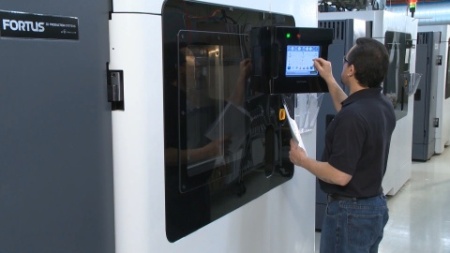Stratasys, a manufacturer of additive manufacturing machines for prototyping and producing plastic parts, and the U.S. Department of Energy (DOE) at Oak Ridge National Laboratory (ORNL) have collaborated to develop a fused deposition modeling (FDM) additive manufacturing technology.
 One target of the initiative is to develop in-process inspection for fused deposition modeling (FDM) systems that assures part quality and suitability for service.
One target of the initiative is to develop in-process inspection for fused deposition modeling (FDM) systems that assures part quality and suitability for service.
The partnership leverages the Manufacturing Demonstration Facility (MDF) of ORNL to promote energy efficient production by employing additive manufacturing processes and materials.
The joint project focuses on two major objectives: one is to develop in-process inspection for FDM systems that assure quality of parts and appropriateness for service, and the other one is to develop carbon fiber-reinforced feedstock materials to create strong, lightweight parts. The overall aim of the project is to minimize the energy consumption in the US industry, commercialize innovative products rapidly and improve the worldwide competitiveness of U.S. manufacturing.
In addition to decreasing energy usage through development of lightweight transportation vehicles, the additive manufacturing technology is highly efficient than traditional manufacturing processes such as machining production tools or machining parts. Benefits of the additive or 3D printing process are decreased energy impact of manufacturing, reduced warehouse and transportation costs, minimum investments in metal tooling and reduced waste streams. The process deposits material only in areas where it is required to create a part.
Jeff DeGrange, VP of Direct Digital Manufacturing at Stratasys, noted that the joint effort with ORNL offers a significant opportunity, mainly in the automotive and aerospace industries, to bring high performance, lightweight products into the market rapidly and at lower costs.